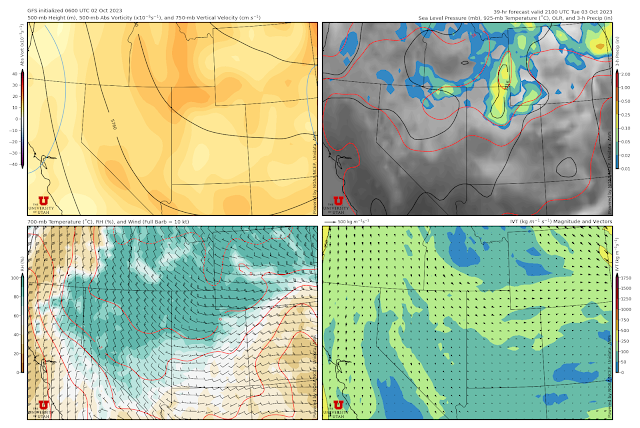The Salt Lake Tribune published an article this weekend discussing plans for Olympic Venues assuming Salt Lake is awarded the games again, which is looking likely (see Utah Olympic Venues Coming into Focus as Organizers Get Creative).
Perhaps most surprising and disappointing is that Snowbasin may not be interested in hosting the men's and women's downhill, super G, and combined events. Perhaps they are just posturing for a better deal with the Olympic committee, but that would be a major loss if it happens.
As far as Olympic downhills go, the Grizzly and Wildflower downhills are pretty good ones. There's a decent amount of vertical and they are steep and technical. Not all Olympic downhills are so challenging. The terrain is scenic, and access for spectators is excellent.
 |
| Top of John Paul Tram and start house for the Grizzly Downhill |
The options outside of Snowbasin appear to be limited or simply less exciting. Per the International Ski Federation (FIS), the minimum vertical drop for an Olympic downhill course should be 800 meters for men (2625 ft) and 700 meters (2297 ft) for women. Perhaps like other Olympic "rules" these can be bent, but let's go with them for now. Snowbird would meet this bill, but the Cottonwoods are not being considered for Olympic events for a variety of reasons (and there are some reasons why Snowbird would be a challenging place to hold the downhill even if they wanted it). Powder Mountain might be able to get a bit over 2500 vertical feet if they did something off of James Peak, but they would have to move heaven and earth to do it and there's no current way to get spectators to the finish line. PCMR could do enough vertical feet in the Mountain Village area, but it would be a sleeper of a course involving long gliding stretches. In the Canyons Village area, the terrain is so convoluted that I'm not sure if you can piece together a solid 2625 vertical feet of Olympic level downhill anywhere.
Which brings us to Deer Valley. With the Mayflower expansion, I think they could get something exceeding 2625 vertical feet from the top of Bald Mountain or Park Benchmark Peak down to Mayflower, which is accessible by US-40. It doesn't snow much there, which is actually a plus. It couldn't hold a candle to Grizzly and Wildflower, but perhaps it is the best alternative.
Next we have this tidbit from the article: "A ski mountaineering course at City Creek Park."
The article goes on to say that such a course would only require 330 vertical feet (100 vertical meters) and that this could be done with several truckloads of manufactured snow. Apparently they are thinking about doing this above the capitol.
There are no details provided, so let's think about how this could be done. One possibility is to do it on city streets, which would enable the truck access. From City Creek park to Ensign Downs Park is over 330 vertical feet.
One can also come up with some wild idea ideas involving off-street routes, however, these have some serious challenges. First is the truck access. Let's keep in in mind that there are a lot of south aspect slopes in this area and the elevation is low. These slopes go through melt-freeze cycles regularly in the winter, which means bringing in a lot of snow for insurance or bringing it in at the last minute. Additionally, mud is potentially an issue and a concern if trucks are going to be traveling in off-road areas.
My suggestion is to do skimo in the mountains. Perhaps the most feasible ski event that could be held in Salt Lake city is a cross-country sprint. Such events have been done in cities in Europe, can be done on existing streets, and can be done in a relatively short circuit, requiring less snow. Sprints are usually 1 to 1.5 km long and with laps, one might only need to cover 0.5 to 0.75 km of city streets with snow.
There is one underlying issue to consider for any event held in Salt Lake City and that is the possibility of air pollution. February is inversion season and there is the very real possibility of hazardous air quality for any event held in the valley.













































